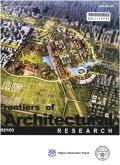不同尺度的空间逻辑:北京新兴网络餐饮实证研究
IF 3.6
1区 艺术学
0 ARCHITECTURE
引用次数: 0
摘要
网络经济的快速发展对人们的日常生活产生了巨大影响。然而,现实空间对这些新经济的区位选择是否仍然重要,仍然是一个有争议的问题。本研究从共享厨房这一新兴的网络餐饮空间入手,在城市、街道和建筑三个尺度上对其进行了空间分析。利用社交媒体数据和手机信号数据,在城市尺度上测试了不同的密度因素,以解释这些经济体的表现。利用空间句法模型,比较了中心区和郊区仅提供外卖服务的餐厅、提供外卖服务的堂食餐厅和传统餐厅的空间可达性。结果发现,它们的空间逻辑各不相同:在城市尺度上,只提供外卖服务的餐厅聚集在高密度区域,并向交通不便的区域扩散。在街道和建筑尺度上,网络餐饮一般对可达性的依赖程度较高,但中心区和郊区的外卖餐厅存在明显差异:在中心区,网络餐饮比郊区的外卖餐厅能承受更多不利位置,如背街小巷或建筑物地下。本文章由计算机程序翻译,如有差异,请以英文原文为准。
Spatial logic at different scales: An empirical study on emerging online catering in Beijing
Rapid development of online economy has great impact on the everyday life. However, whether real space still matter on the location choice of these new economies remains as a controversial question. This research starts with spatial analysis on shared kitchen as an emerging new type of online catering space in Beijing across three scales: city, street, architecture. Using social media data and cellular signal data, different density factors are tested at city scale to explain the performance of these economies. Using space syntax model, the spatial accessibility of takeaway only, dine-in with takeaway service and conventional restaurants are compared in central and suburban areas. It is found that their different spatial logic: at city scale, takeaway only restaurants gathered in the high-density area, and diffused to the area with poor accessibility. At street and architectural scale, online catering in general shows higher dependence on accessibility, but there is a clear difference between central and suburban cases of takeaway only restaurants: in central areas, online catering could bear more disadvantageous positions like backstreet or under the ground of buildings than it in suburban case.
求助全文
通过发布文献求助,成功后即可免费获取论文全文。
去求助
来源期刊

Frontiers of Architectural Research
ARCHITECTURE-
CiteScore
6.20
自引率
2.90%
发文量
430
审稿时长
30 weeks
期刊介绍:
Frontiers of Architectural Research is an international journal that publishes original research papers, review articles, and case studies to promote rapid communication and exchange among scholars, architects, and engineers. This journal introduces and reviews significant and pioneering achievements in the field of architecture research. Subject areas include the primary branches of architecture, such as architectural design and theory, architectural science and technology, urban planning, landscaping architecture, existing building renovation, and architectural heritage conservation. The journal encourages studies based on a rigorous scientific approach and state-of-the-art technology. All published papers reflect original research works and basic theories, models, computing, and design in architecture. High-quality papers addressing the social aspects of architecture are also welcome. This journal is strictly peer-reviewed and accepts only original manuscripts submitted in English.
 求助内容:
求助内容: 应助结果提醒方式:
应助结果提醒方式:


